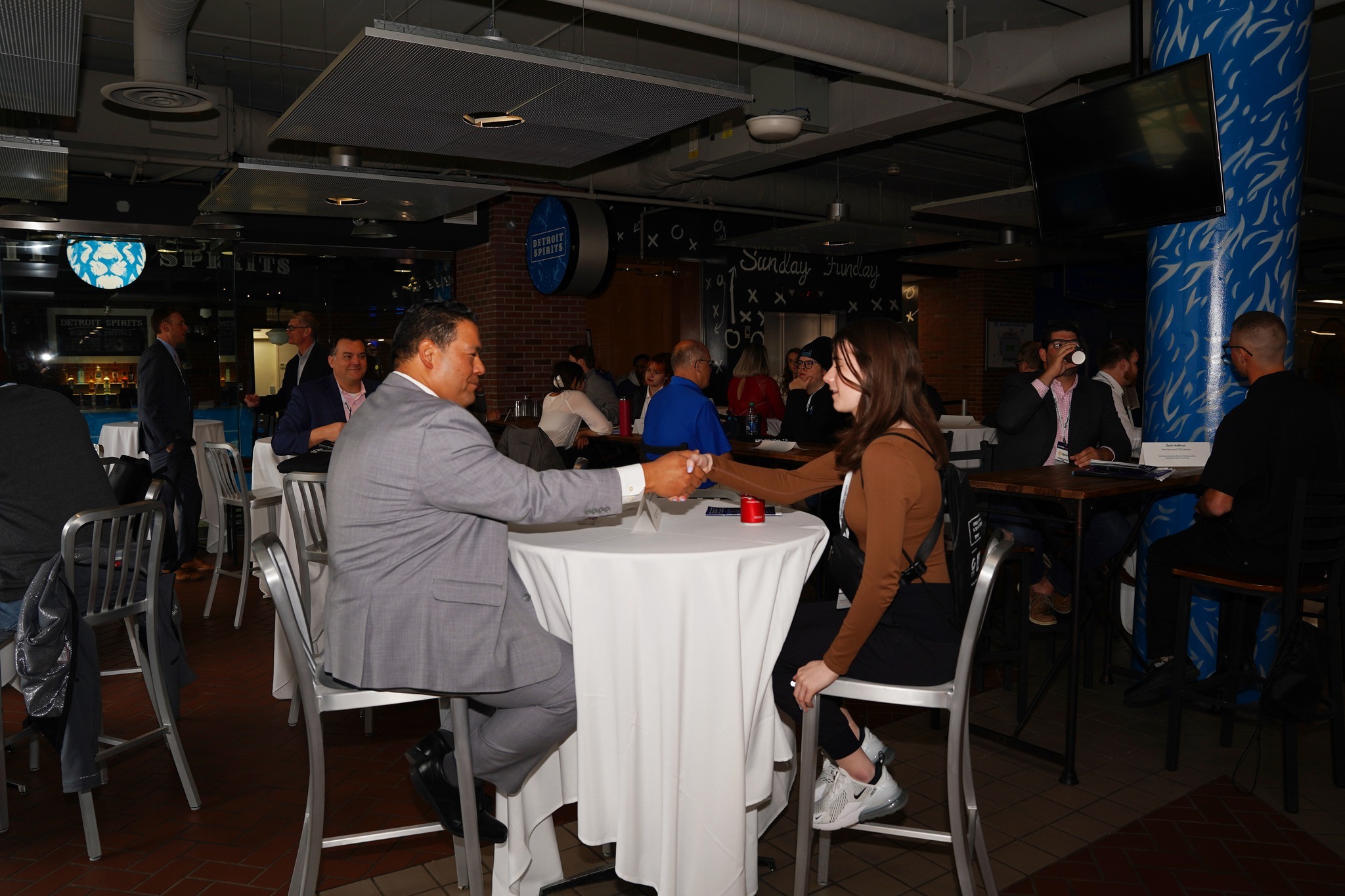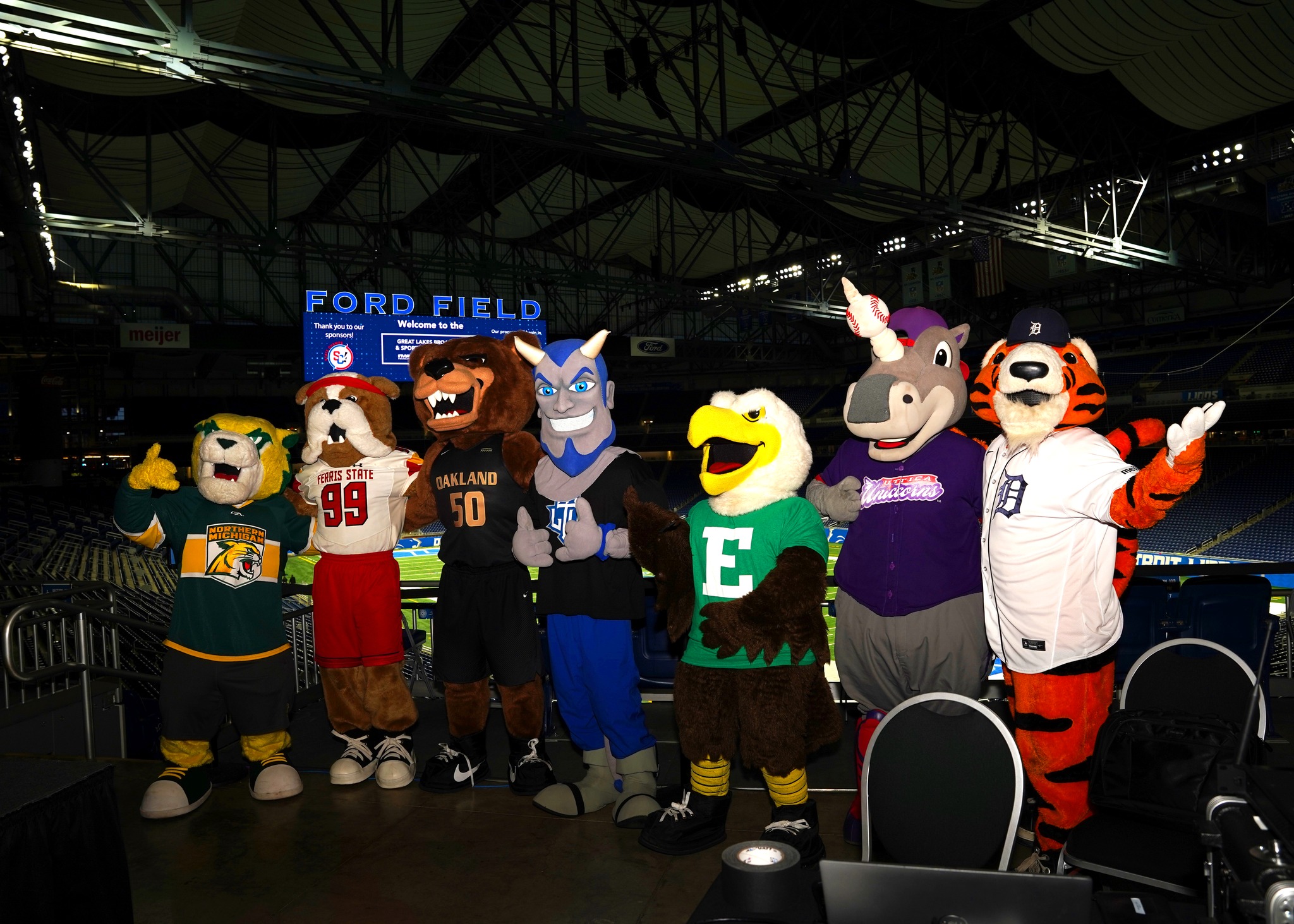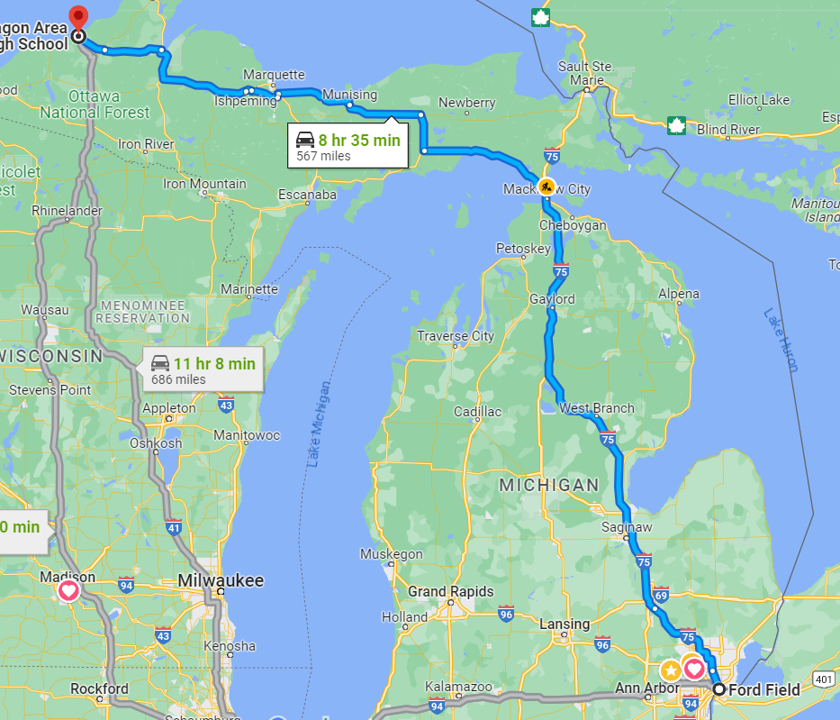
Yesterday’s post about how many of us caught the “radio bug” as kids resonated for scores of you. I enjoyed reading your comments here on the blog, as well as on my socials.
Whether you enjoyed a meteoric career like Bill Garcia or you were only in the business for a few years, that shared experience is a meaningful one. And we learned from Scott Westerman’s amazing recreation of the radio station he grew up with in Detroit – Keener 13 – those moments stay with you for a lifetime.

But alas, some of you pointed out the same experience is no longer possible here in the 2020s. After all, teens don’t listen to the radio much, if at all. They’re far more enamored with streaming services, video games, and social platforms like TikTok and Instagram.
And while there’s no question there’s truth to those observations, there is an “other side” to this coin. While radio might have held more fascination decades ago, and there were schools like the Brown Institute in Minneapolis or the Specs Howard School here in Detroit, that same emotional tug that yanked many of us into radio broadcasting a couple of generations ago apparently is still highly potent today.
I saw this with my own eyes last week at Ford Field, home of the Detroit Lions. For the second consecutive year illustrated the definition of “Think Big.” Conceived by Michigan Association of Broadcasters’ President/CEO Sam Klemet, the Great Lakes Broadcast and Sports Media Academy brings together broadcasters from across the state with hundreds of high school and college students interested in learning more about a career in the industry.
Here’s a less-than-two-minute sizzle reel of the event:
More than 900 young people – high school and college students – were on hand to hang out with TV and radio broadcasters, local athletes, and even a battalion of team mascots from universities across the state.
Frankly, the event looked great – professional, slick, big, and a magnet for students shopping for a career opportunity.
As we discussed in yesterday’s blog post, sometimes all it takes is an initial positive experience, seeing how a show comes to life, or hearing an encouraging word from a real-life broadcaster.

The Academy had it all – Michigan’s Lieutenant Governor Garlin Gilchrist, former Tiger turned TV and radio announcer Craig Monroe, and professionals from broadcast stations in Detroit and from all over the state. Just about every major broadcaster and state university were represented at tables lining Ford Field’s concourse, a chance for students to interact with these local brands, organizations, and institutions.
“Student Experiences” gave attendees hands-opportunities to stand in front of a green screen or to practice interviewing techniques.
This event builds upon the “Be There” campaign the MAB launched over the summer which has now been exposed to more than 5,000 students statewide.
All this activity here in Michigan illustrates how broadcast organizations can focus their efforts around a goal – in this case, show Gen Z’s there are exciting local media careers in the state.
And then there’s the reality of “dreaming BIG.”
You may remember last summer I wrote a blog post highlighting the plight of an Upper Peninsula high school radio station, 88.5 WOAS. You can read the story here.
In order to preserve its broadcast service to small town Ontonagon in the UP, funds needed to be raised. Broadcasting out of the high school library, WOAS has been on the air since 1978, serving its small community of 1,300 residents.
But a new station, licensed at the same 88.5 frequency, threatened to reduce WOAS to secondary station status, further limiting its coverage as a 10 watt FM. The only solution? A $75,000 transmitter allowing WOAS to broadcast at 100 watts. In Ontonagon, it may as well have been $75 million. This station has no budget and is partially funded by the net profits from the school’s vending machines.
And so the community came together – as did many of you, thank you – to send money to northern Michigan to save this radio station.

And last week the NBC Nightly News with Lester Holt covered the saga of little WOAS, a remarkable state of affairs for this small town and its noncommercial radio station:
One Michigan school’s radio station has been broadcasting out of the library since 1978.
But when a larger station wanted to take over 88.5 FM, the community stepped in to raise enough money to save WOAS.@maggie_vespa shares more: https://t.co/ydv7D0O0YR
— NBC Nightly News with Lester Holt (@NBCNightlyNews) November 10, 2023
It’s when reporter Maggie Vespa interviews student DJs on WOAS about the importance of this radio station to its community that you hear the magic of the medium. And if that doesn’t convince you these Gen Z’s are all-in to their hometown radio station, well, nothing will.
The passion for radio among teenagers – alive and well in the 1960s and 1970s – is still making dreams come true for young people today. Is radio a different medium today than when many of us “got in?”  Without a doubt. But the magnetic attraction of radio to teens has the same pull it did for Scott Westerman in Ann Arbor at WPAG in 1971.
Without a doubt. But the magnetic attraction of radio to teens has the same pull it did for Scott Westerman in Ann Arbor at WPAG in 1971.
The more modern version was on display at Ford Field last week in downtown Detroit, and on days when school is in session in the library at Ontonagon High School, just 567 miles up I-75 North.
I wish we could “tag” these students having their first experiences with radio like they do with sharks. It would be fascinating to learn how many of them are working in radio in the next five years. And how many are winning Marconis and Crystals a decade from now.
The love affair between radio and teens goes on.
- What To Do If Your Radio Station Goes Through A Midlife Crisis - April 25, 2025
- A 2020 Lesson?It Could All Be Gone In A Flash - April 24, 2025
- How AI Can Give Radio Personalities More…PERSONALITY - April 23, 2025




I love this story. We have recently hired two college grads (older Gen Z’s) who caught the radio bug working for their college station. And, our intern was thinking about a career in TV until she spent the semester with us. See what radio offers has drawn her into the medium, and she hopes to make a career out of it after graduation.
Appreciate the story, Kyle.
I feel bad for those kids moving from school radio to commercial radio, only to find out 1) they can only talk 4x/hour, 2) they can only talk about the music (concert dates, artist bios etc), and 3) they can’t play songs they brought from home (well, YEAH…).
If they are good entertainers on the academic level and not just mechanical format-executors, then they need room, training & focus, and encouragement to develop those aspects of their performance while staying “inside the lanes” of station identity.
Without that, they’re gone.
Alan, agreed. Broadcasters need to do more than hire them – they need to give the reins. I think back to most of the people from my era who were programmers – most in their twenties.
This is a great story!
There is actually tremendous opportunity for young people to look to careers in media, and to include radio as a PART of it.
When I talk to students about putting content creation at the center, and customizing it from there for various platforms, they get very excited.
They don’t get excited about radio. They don’t get excited about TV. But they do get excited about creative endeavors and the opportunity to be broad communicators in several different ways!
It’s truly remarkable.
Everyone knows the definition of insanity, and thinking that a young person wants to do the same thing those of us did at a completely different time, and in a completely different world, and that IS insanity.
Honestly, it interests me very little, either.
Why?
Because it’s 2023!
As a longtime radio person, I have very little interest in what is on the radio today. Sorry, I just don’t. If it is merely a utility for music, there are far better sources as utilities. For a local content experience, I’ve cobbled various things together for myself, and that rarely includes radio.
And before anyone decides to suggest that I have sold out, because I don’t care to engage in the conversation of how voice tracking ruined the business. Or that the flawed measurement tools actually have pushed the industry in the opposite direction (of course, a decent jukebox will perform well in PPM often to poor results for advertisers and deliver low power ratios, to boot). That’s because programmers, and I don’t mean local ones, because I don’t know very many of them today, who are more than log generators, program to a flawed measurement tool, instead of people. Oops. I just whined! 😉
That’s why radio is uninteresting in many cases, as it stands now. That’s not because it can’t be. It’s because it is.
The world of the “DJ” is gone. Since that position has changed to being a rather vacuous role, it would be hard for any young person to say, “Hey, I’d really like to do that!”
Why would anyone even wonder about that?
Creating the new model requires throwing away the old playbook, which was a playbook that has also been dumbed down for the past 25 years anyway! Rest assured, even if it were executed like it was those years ago, it would make a little difference.
The past is over. Get over it!
Look to the light of the future!
What’s more interesting and exciting than grousing about a challenged business, for all the reasons we already know, and have known, is to develop yourself or build in company that places content front and center, is proactive in setting up incubator programs to a teach students how to be influencers and stars in different ways, and perhaps much BIGGER ways.
This might sound distasteful to longtime radio people, some of whom, who got into the business because it could be a great place for creative, yet introverted people.
And the business is even more populated today with “indoor cats,” unfortunately.
When you’re stuck inside by your own choice as a couch potato, and then you have a couch potato-suitable “indoor” job, where you never see anyone, never go anywhere, never really talk to anyone, aren’t all that curious and nor really adventurous, how could you possibly be interesting to anyone? So many radio people are less vibrant and active than the listeners they are supposed to “lead.” The new radio is not a job for voiceover artists. Radio is more than having a great voice and reading well.
I will take “interesting” any day over a good voice that says nothing, and can hit the post as a DJ.
Think about it.
Think about what you expect, and enjoy most about radio! Many longtime radio people put far too much value on only the mechanics. You have to have both. It can be summed up simply by saying if you can talk up an intro with a bunch of words, and actually have nothing important or interesting to say, that’s a big problem!
If it’s about thinking that “personality” is about being a great jock, think harder.
If your first response to this is, I can’t do the above things because I have to voice track 156 stations, then just accept it, or get a new job! Only you have the power to make your life whatever you want it to be.
One can hide behind the excuse of developing technologies having ruined everything.
It’s not the technology. It’s actually fantastic and creates so many wonderful and creative opportunities when used for the good.
When “innovation” is defined as avoiding bankruptcy for another quarter, and leadership is about operating “systems,” therein lies the problem.
Can’t wait for the next industry panel led by the same people who are overseeing the demise of the business. Great managers of decline.
That’s not the same thing as leadership.
Think about it.
But it doesn’t change, until that changes.
But there is really good news!
With the fire no longer burning, and embers are about to go dark, the future is around the corner! We just need to have that happen more quickly in order to go in and rekindle things with real leadership, and an actual vision that drives it!
And for those who pine for the good old days, please retire! If you haven’t retired, and you want to keep going, ask yourself, “for what am I famous?” What’s that thing for which I’m best known? If you can’t answer that question, you need to figure it out. And if you say “I’ve done middays on station X, reading liners for 35 years” that ain’t famous!
For some, unfortunately, that’s impossible to answer that question. And that means it’s better to move into something different that provides the same, and in many cases, a better means to an end.
Life is way too short!
Exciting for those of us who still have tread on their tires and can look forward to driving on them once again!
It will happen!
Who’s in?!?
Right on target, Tom. Especially the “please retire” beg. I am 100% behind that.
On my way up, I would endure jocks and engineers alike grousing about carts, turntables and rip-n-read being “REAL radio”, not like them thar newfangled CDs and commercials delivered as MP2s and MP3s. I swore that, no matter what direction the industry would take in the future, I would never become one of those guys. And if I did, I would walk away forever.
Nope … Still here. Since 1977.
I regret never having worked with you, Tom. That would have been a fun ride.
Tom, thanks for a thoughtful and even hopeful response. I have thought about it. And there’s still tread on the tires and gas in the tank. Appreciated.
I have worked for years part-time at a local college with a radio program. It is a misnomer that “no young people want to work in radio”. It is not a misnomer to suggest a need for radio to go back to the basics of appealing to younger listeners and make radio relevant to THEM. This will be a challenge for radio. Their musical tastes are all over the road. Everything from Rock, to Rap, to Country to Bluegrass. This younger generation fits none of “formatic silos” radio operates in today.
Hi Kevin,
Wish it were that easy that we could fix radio by simply finding songs younger demos like and playing them.
It’s really about creating a locally-focused content experience for the them.
They already have better means by which to cater to their own musical tastes, which among other things, is likely self-curated.
They now also have other means for music discovery.
We need to appeal to them on a local basis, based on things that are of interest to them, and that they care about deeply, beyond playing a collection of songs.
It doesn’t mean we don’t play songs on music stations. In fact, we pay a lot of them, but instead, we are also influencers to the target.
No DJs
No liner-card readers
No “indoor cats.”
INSTEAD
We’re relatable and outgoing people that live within the life group, who are actually excited about meeting people and are interested in people, places, and things.
We are adventurous, curious, and want to see and do things, and share their experiences in hopes of actually engaging and activating people through their emotional connection.
Content is at the center of the universe, not platforms. They are merely delivery systems used in slightly different ways to communicate what’s needed. However, the driver is CONTENT.
It’s not just RADIO, specifically.
We are not sitting in a room, overseeing a playlist.
We are “outdoor cats!”
And hopefully, we haven’t been declawed. Thanks for this, Tom.
Kevin, that’s right. They may love the equipment & technology. But not much of what is coming out the speakers.
Rose-colored glasses view; we attract them, hire them, AND then give them some control of the content.